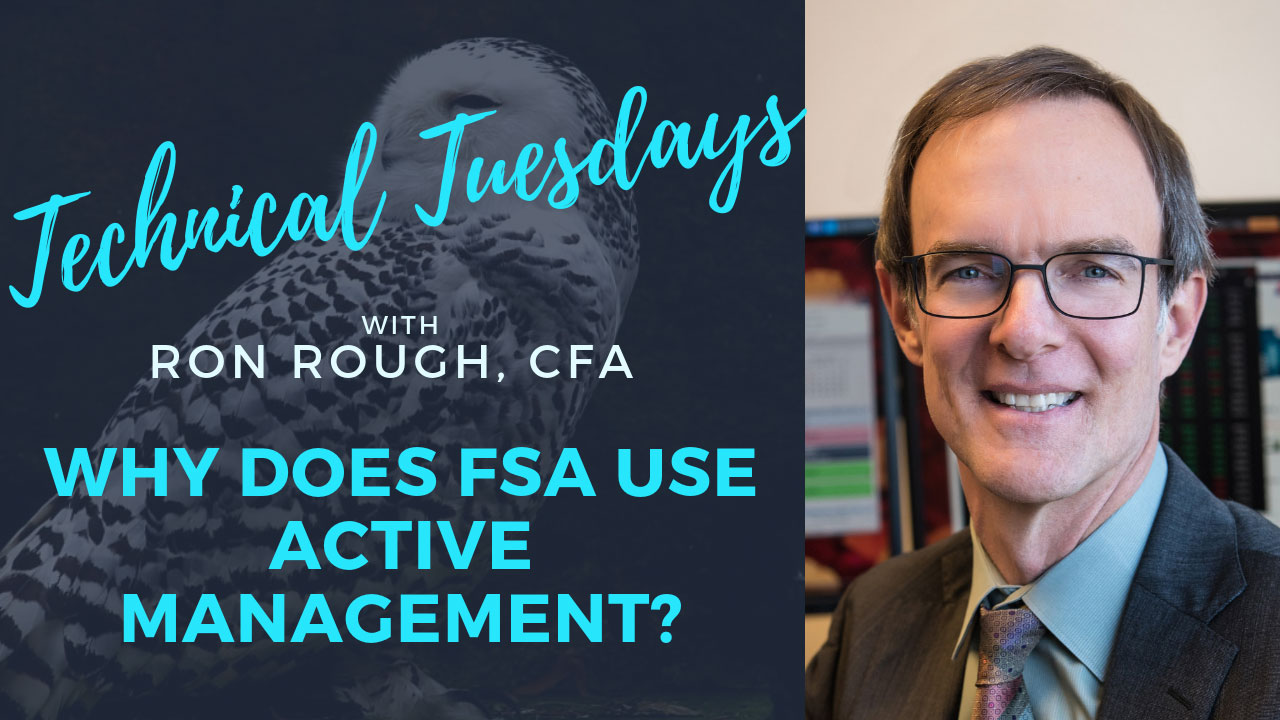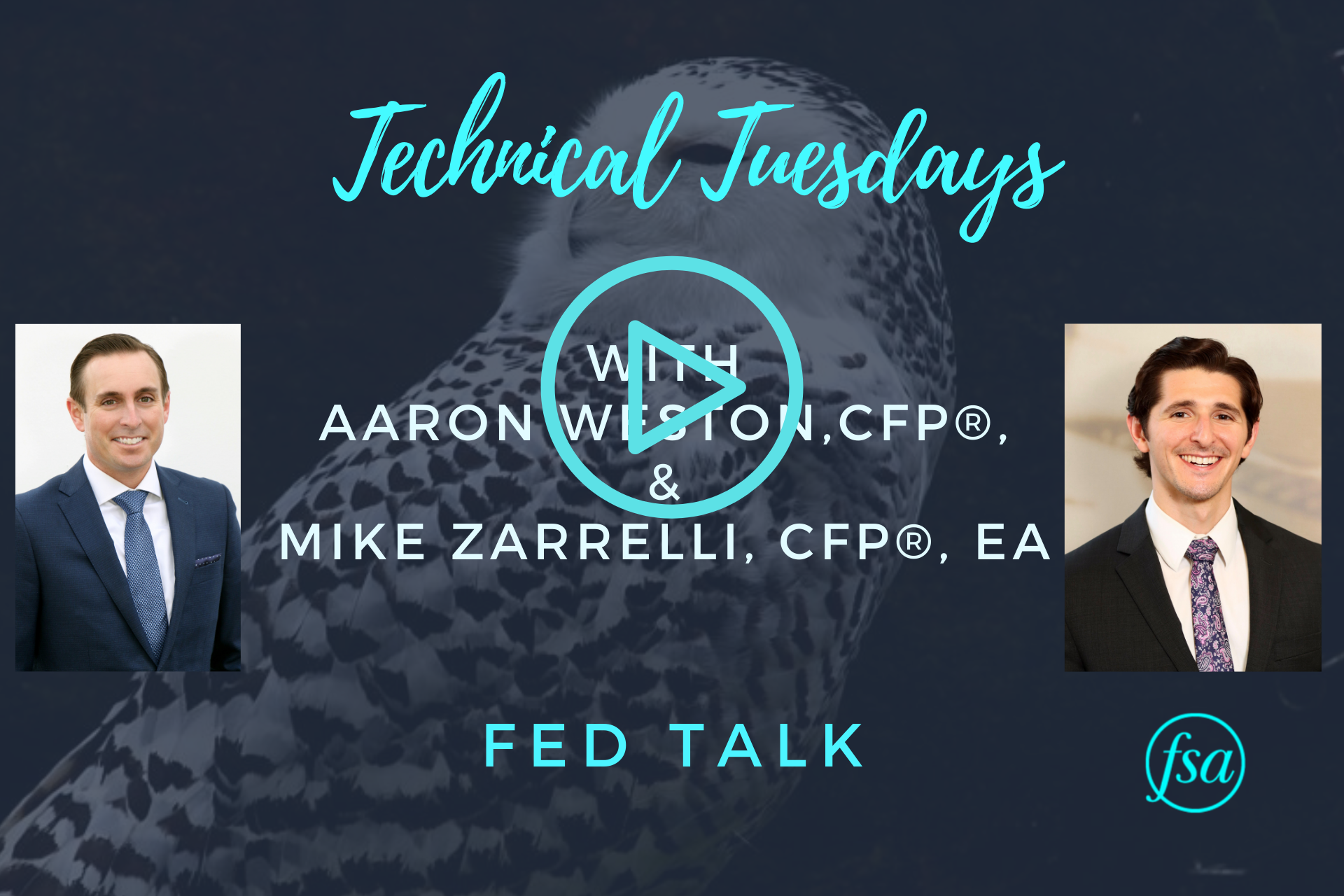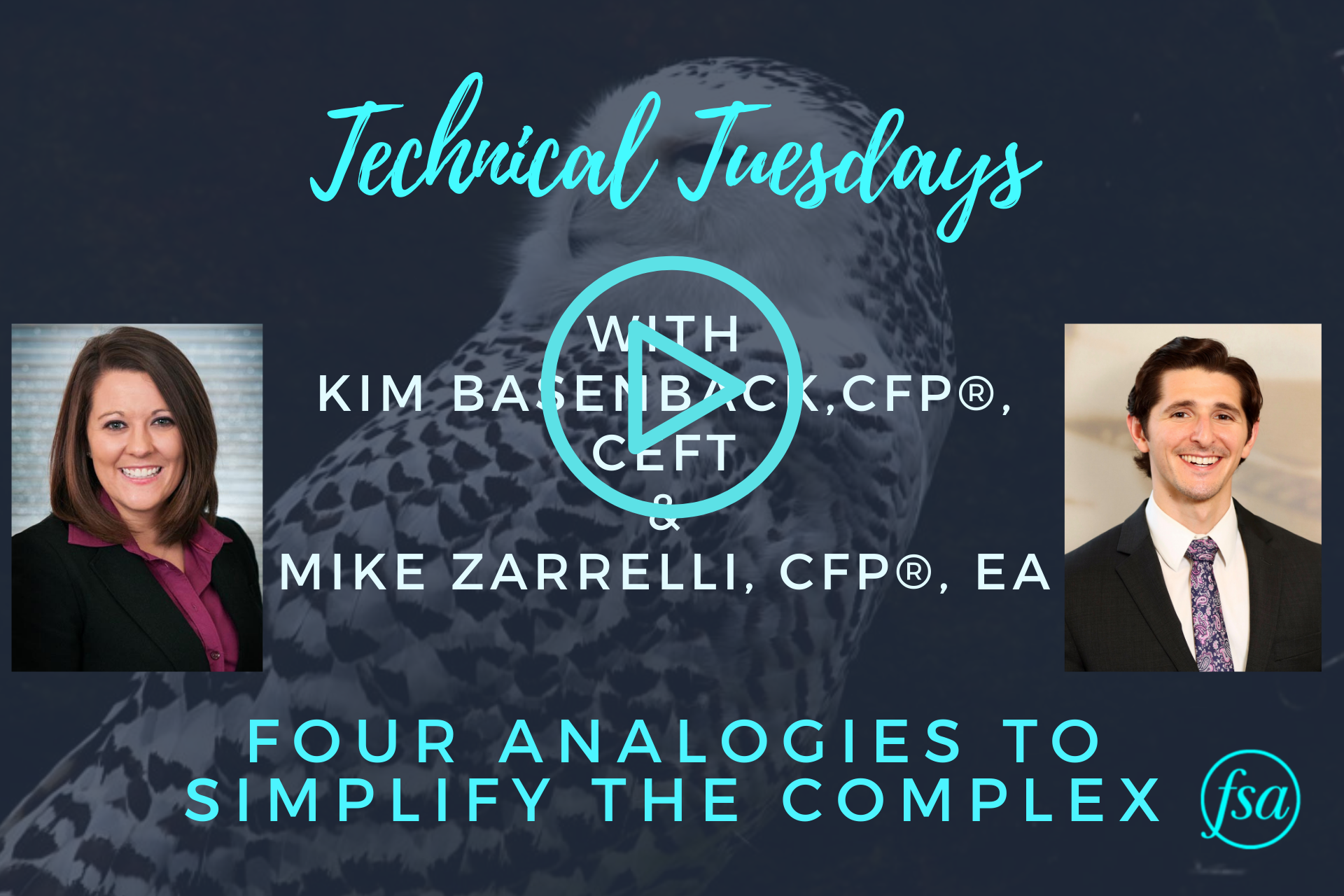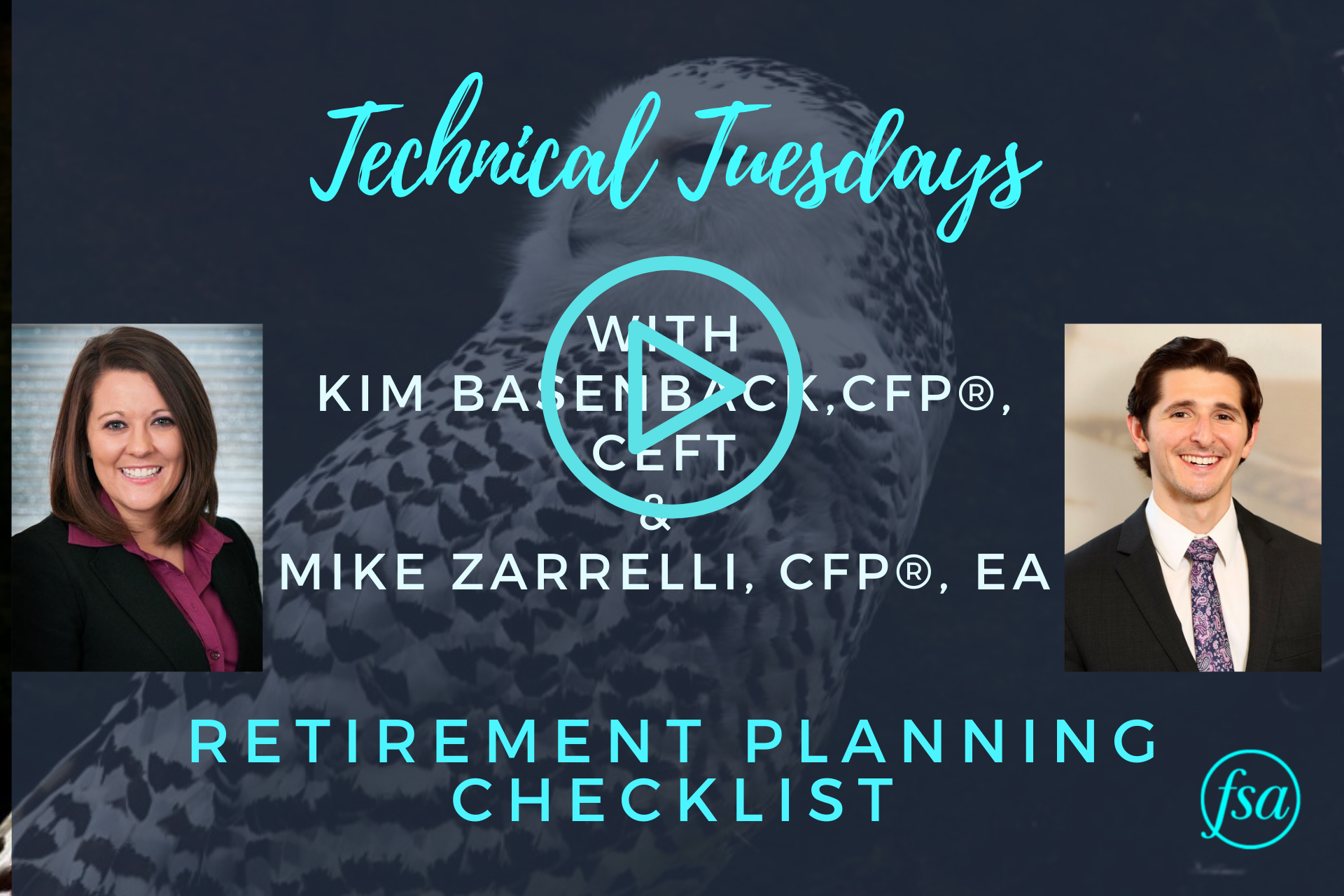Active investment management involves adjusting your portfolio allocation according to trends in the market. Ron Rough, CFA, FSA’s Director of Portfolio Management, explains the difference between active and passive investment management, and why FSA has chosen active management for the past 35 years.
Transcription
Welcome to Technical Tuesdays, this is your host Ron Rough, and today’s question is: Why does FSA use Active Management?
There are two broad investment choices we have in managing client money. One is a passive or strategic approach, the other is an active or tactical approach. Both, over the long run, either strategy can work for clients, but there are differences, so let’s take a look at those differences.
Passive Investment Management
What you’ll notice here, the big characteristic of strategic or passive portfolio is the diversification. This portfolio would be held like this over the long run with very few changes to the portfolios. They would be rebalanced from time to time, but there wouldn’t be major shifts in the portfolio.
The logic behind or the theory behind a more of a passive portfolio is that you hold this portfolio over the long run. Each client determines the risk and return characteristics that’s important to him or her and then this portfolio would represent that best trade-off.
Active Investment Management
Now if we looked at a tactical portfolio at any point in time, it may look very similar. In this case, the portfolio looks very similar. However, the difference is over time as the market environment changes, the portfolio will change.
In this particular example, the money market allocation grew considerably as stocks were sold out of the portfolio and even some of the bonds were sold. And this happens as a result of a change in the market environment.
So for an active portfolio, the portfolio changes as the market environment changes. One of the characteristics of an active approach is in a difficult market in a bear market, those portfolios have the potential to outperform a strategic portfolio, because the manager can be taking equities out of the portfolio and going to the money market.
Typically, more risk-averse clients are drawn to an active portfolio as well as older investors, clients who
have built up a sizable portfolio and are more concerned about protecting their portfolio rather than how much it grows.
Why does FSA use Active Investment Management?
It really goes back to our founding over 35 years ago. We found that clients, once their portfolios had fallen around 10%, they started to get nervous, anxious about their losses. And so the approach that we developed was really about how to protect client assets during any difficult market. It’s not the only approach, but it’s the approach that our clients felt they needed to help them sleep at night.
If you have any questions or comments, please call or email us.
This is Technical Tuesday, and I’m Ron Rough. Thank you for watching!
To view our disclosures, including our Disclosure Brochure, please visit www.FSAinvest.com/disclosures.




